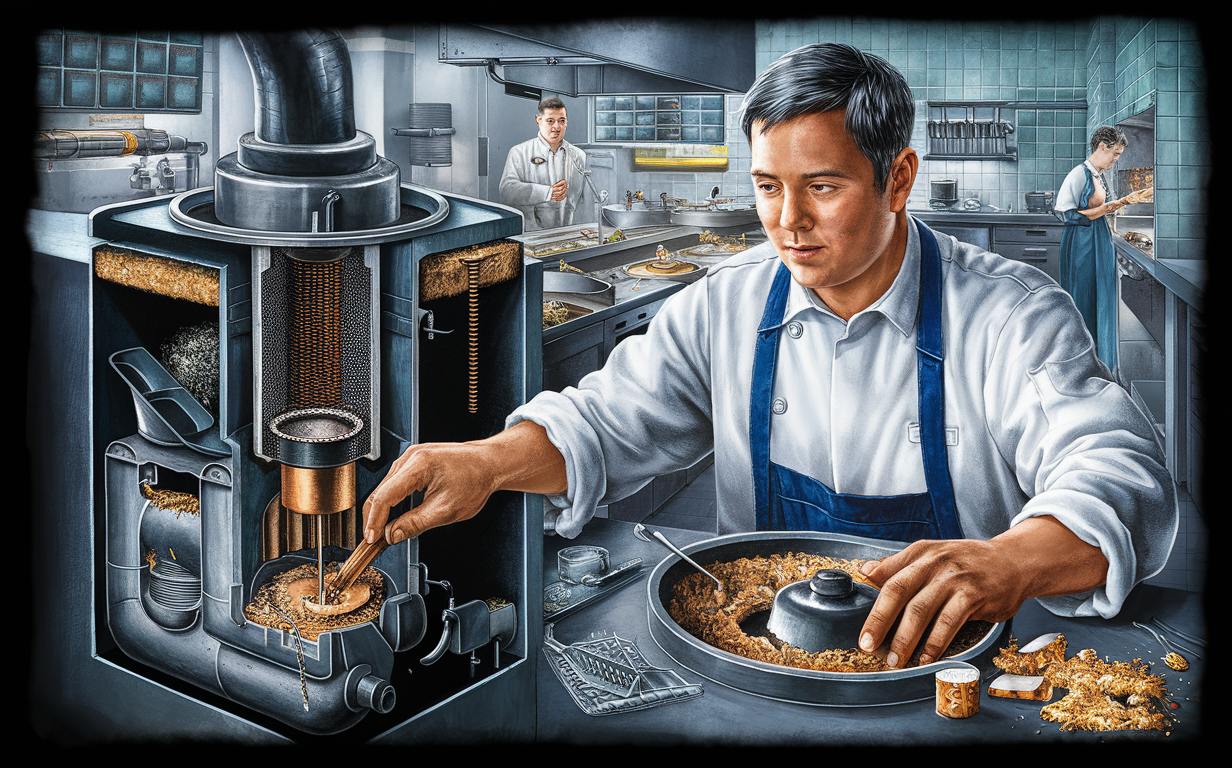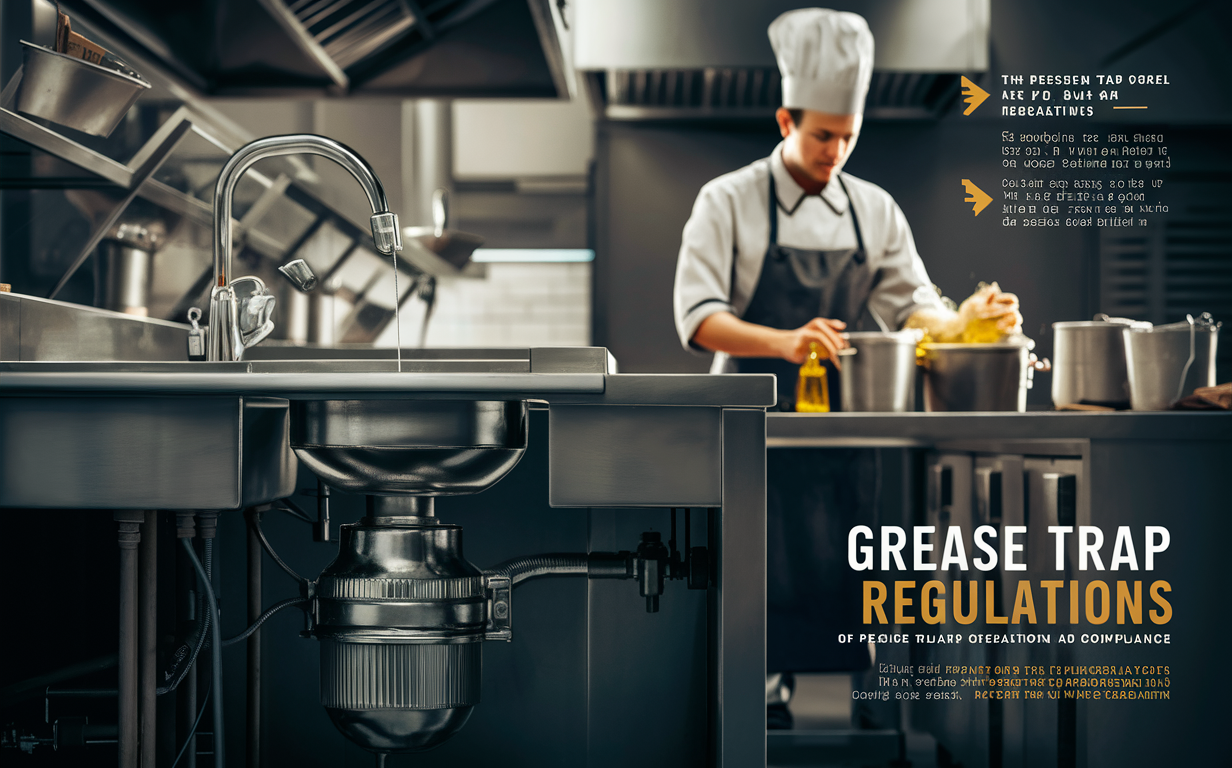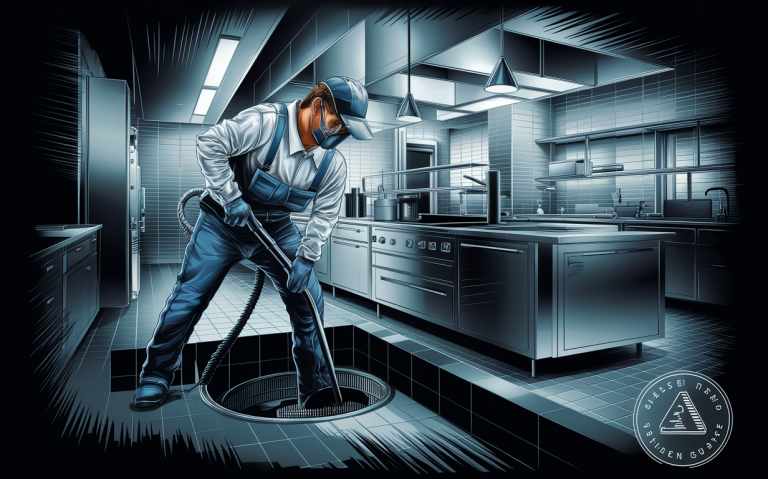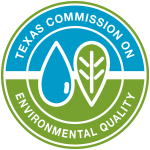Grease Trap Regulations and Compliance: What You Need to Know
Grease trap regulations and compliance are crucial for food businesses. Learn about maintenance, penalties, and choosing the right service provider.
Grease trap regulations are essential for businesses in the food service industry to ensure compliance and avoid hefty penalties. Understanding these rules can be daunting, but it’s critical for the smooth operation of any establishment dealing with food preparation.
This article breaks down the complex topic of grease trap compliance into simple, actionable insights for working-class readers.
Key Takeaway
- Understanding local and federal grease trap regulations is essential for compliance.
- Regular maintenance and record-keeping are crucial for avoiding penalties.
- Choosing the right grease trap size and professional service can save time and money.
Why Grease Trap Regulations And Compliance Matter

Grease traps play a vital role in preventing fats, oils, and grease (FOG) from clogging municipal sewer systems.
Regulatory bodies like the Environmental Protection Agency (EPA) set guidelines to minimize environmental impacts and ensure the wastewater system functions efficiently. Non-compliance can lead to severe penalties, business disruptions, and environmental damage.
Local vs. Federal Regulations

Federal guidelines provide a baseline, but local laws often have stricter requirements. Cities like Houston and New York have their own sets of rules that businesses must follow. It’s essential to consult both federal and local regulations to stay compliant.
Federal Guidelines
The EPA provides overarching guidelines that all food service establishments must follow. These rules focus on the installation, maintenance, and cleaning frequency of grease traps.
Local Ordinances
Cities and states can implement more stringent laws. For instance, Houston mandates quarterly inspections and record-keeping, whereas New York requires monthly cleaning of grease traps. Failing to adhere to these local laws can lead to severe penalties and even business closures.
Types of Grease Traps

Understanding the different types of grease traps can help in choosing the right one for your establishment. The two main types are Passive Grease Traps (PGTs) and Automatic Grease Removal Units (AGRUs).
- Passive Grease Traps (PGTs): These are the most common and cost-effective. They require manual cleaning and are suitable for smaller establishments.
- Automatic Grease Removal Units (AGRUs): These are more advanced and expensive but offer automated grease removal. They are ideal for larger establishments with high grease output.
Installation and Sizing Requirements

Proper installation and sizing are crucial for effective grease trap performance. Incorrectly sized traps can lead to frequent blockages and maintenance issues.
Sizing Guidelines
Sizing is typically based on the flow rate and grease retention capacity. Consult with a professional to ensure your grease trap meets the required specifications.
Installation Best Practices

- Install traps as close to the source of grease as possible.
- Ensure easy access for cleaning and maintenance.
- Follow manufacturer guidelines and local plumbing codes.
Maintenance and Cleaning
Regular maintenance is a cornerstone of grease trap compliance. Neglected traps can overflow, causing severe plumbing issues and environmental hazards.
Cleaning Frequency
The cleaning frequency depends on the type of food service establishment and the amount of grease produced. For most, a monthly or quarterly schedule suffices. However, high-volume businesses may require more frequent cleaning.
Record-Keeping
Maintain detailed records of all cleaning activities, including dates, methods used, and the amount of grease removed. These records are essential for compliance checks and can save you from hefty fines.
Choosing the Right Service Provider
Selecting a reliable service provider is crucial for maintaining compliance. Look for companies with proper licensing, insurance, and experience in grease trap maintenance.
Questions to Ask
- Are you properly licensed and insured?
- How much experience do you have in grease trap maintenance?
- Can you provide references from other clients?
DIY vs. Professional Cleaning
While DIY cleaning might seem cost-effective, it often falls short of regulatory standards. Professional services ensure thorough cleaning and proper disposal of grease waste.
Pros of Professional Cleaning
- Ensures compliance with local and federal regulations.
- Saves time and effort.
- Reduces the risk of plumbing issues and environmental damage.
Understanding Penalties for Non-Compliance
Failing to adhere to grease trap regulations can result in severe penalties, including fines, business closures, and criminal charges.
Common Penalties
- Fines: These can range from a few hundred to several thousand dollars.
- Business Closures: Non-compliance can lead to temporary or permanent business shutdowns.
- Criminal Charges: Severe violations can result in criminal charges against business owners.
Practical Tips for Compliance
- Regular Inspections: Conduct regular inspections to identify potential issues early.
- Employee Training: Train your staff on the importance of grease trap maintenance and compliance.
- Use the Right Cleaning Products: Ensure you use environmentally friendly and approved cleaning agents.
Comparison of Grease Trap Types
| Feature | Passive Grease Traps (PGTs) | Automatic Grease Removal Units (AGRUs) |
|---|---|---|
| Cost | Low | High |
| Maintenance | Manual | Automated |
| Ideal for | Small establishments | Large establishments |
| Installation complexity | Low | High |
| Cleaning frequency | Monthly/Quarterly | Bi-weekly/Monthly |
- According to the Environmental Protection Agency (EPA), grease trap regulations are in place to prevent the discharge of fats, oils, and greases (FOG) into wastewater systems (EPA, 2021).
- The Food and Drug Administration (FDA) estimates that 35% of food service establishments have non-compliant grease traps (FDA, 2019).
- The National Restaurant Association reports that restaurants spend an average of $2,000 to $5,000 per year on grease trap maintenance (NRA, 2021).
- The National Small Business Administration (SBA) states that non-compliance with grease trap regulations can result in fines up to $15,000 per day (SBA, 2021).
- The National Fire Protection Association (NFPA) recommends that cooking equipment and grease trap fires accounted for 5% of all reported fires in 2020 (NFPA, 2021).
Penalties for Non-Compliance by City
| City | Fine Range | Additional Penalties |
|---|---|---|
| Houston | $500 – $10,000 | Business closure, criminal charges |
| New York | $1,000 – $15,000 | Business closure, environmental cleanup charges |
| Los Angeles | $700 – $12,000 | Temporary business shutdown |
| Chicago | $600 – $9,000 | Business closure, additional inspection fees |
Steps to Ensure Compliance
- Understand both federal and local regulations.
- Choose the right type and size of grease trap.
- Schedule regular maintenance and cleaning.
- Keep detailed records of all maintenance activities.
- Train employees on the importance of grease trap compliance.
- Choose a reliable, professional service provider.
- Conduct regular internal inspections.
- Use compliant cleaning products.
- Consult with experts for any compliance-related queries.
- Stay updated on any changes in local regulations.
The Role of Technology in Compliance
Modern technology can simplify grease trap maintenance and ensure compliance. Automated systems and IoT devices can monitor trap levels and alert you when cleaning is needed.
Benefits of Technology
- Remote Monitoring: Real-time data on grease levels.
- Automated Alerts: Notifications for scheduled maintenance.
- Data Analytics: Insights into grease production patterns.
Key Takeaway Revisited
Understanding and adhering to grease trap regulations are crucial for any food service establishment. Regular maintenance, proper record-keeping, and choosing the right service provider can save you from hefty penalties and ensure the smooth operation of your business.
Conclusion
Grease trap compliance may seem overwhelming, but breaking it down into manageable steps can make the process straightforward. By understanding the regulations, choosing the right equipment, and maintaining regular upkeep, you can ensure your business remains compliant and operates efficiently.
Always stay informed about local and federal laws to avoid penalties and contribute to environmental sustainability.
For more information on grease trap regulations or to schedule a service, contact Texway Wastewater Services today!






 Texway Wastewater Services is a septic, wastewater, and excavation company based out of Burleson, Texas and serving the surrounding areas. We specialize in
Texway Wastewater Services is a septic, wastewater, and excavation company based out of Burleson, Texas and serving the surrounding areas. We specialize in